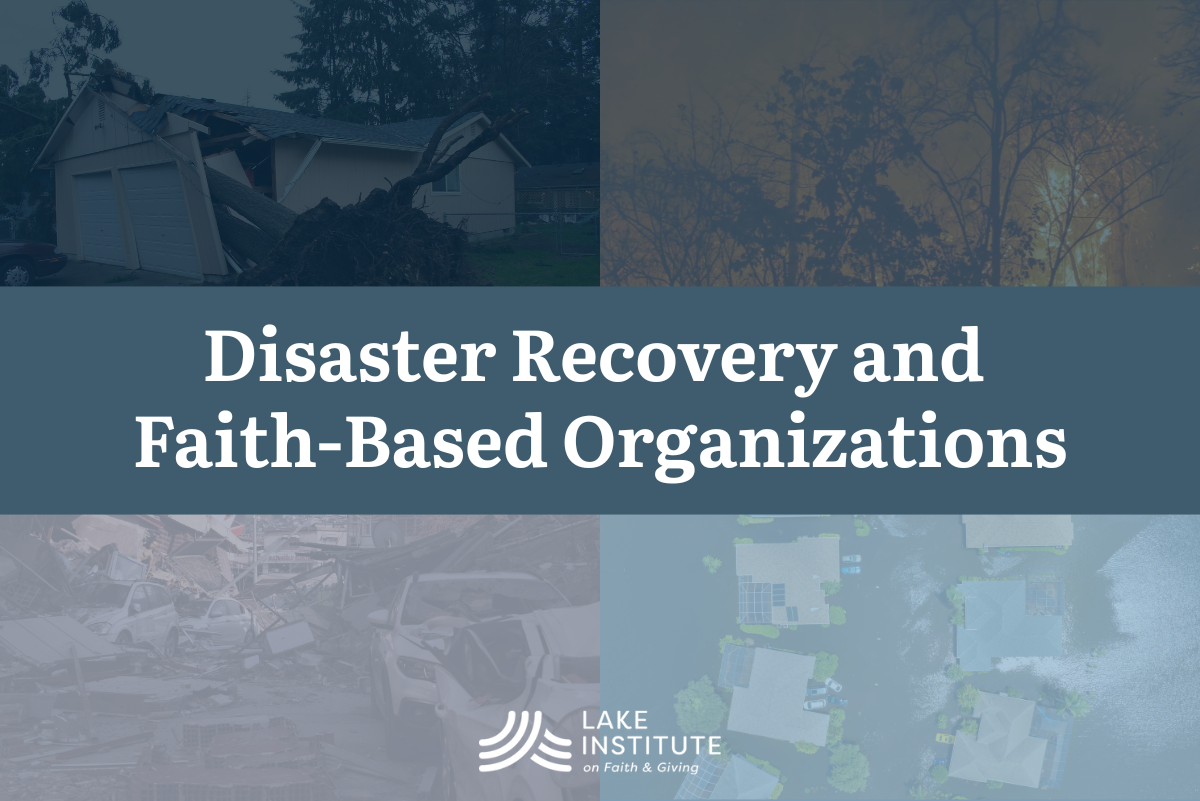Disaster Recovery and Faith-Based Organizations
Disaster Recovery and Faith-Based Organizations
By David P. King, PhD, Karen Lake Buttrey Director and Associate Professor, Philanthropic Studies, Lake Institute on Faith & Giving
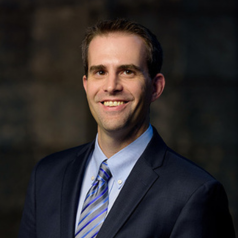 In recent months, we’ve marked the one-year anniversary of Hurricane Helene and the twentieth anniversary of Hurricane Katrina. Meanwhile, recovery efforts continue for those affected by this summer’s Texas floods and the Eaton and Palisades Fires in California. Natural disasters are becoming more frequent and increasingly dominate our newsfeeds. Amid these crises, we must not overlook the vital role that faith-based organizations play in disaster response and recovery.
In recent months, we’ve marked the one-year anniversary of Hurricane Helene and the twentieth anniversary of Hurricane Katrina. Meanwhile, recovery efforts continue for those affected by this summer’s Texas floods and the Eaton and Palisades Fires in California. Natural disasters are becoming more frequent and increasingly dominate our newsfeeds. Amid these crises, we must not overlook the vital role that faith-based organizations play in disaster response and recovery.
It’s a well-established fact: faith-based organizations provide the bulk of disaster recovery efforts. As Religion News Service reporter Bob Smietana has consistently reported, faith communities are uniquely positioned to respond to hurricanes, tornadoes, and floods. They consistently comprise the majority of donors and volunteers deployed to affected areas. These communities are not only motivated by faith to give and serve—they are also deeply embedded in local networks, making them natural first responders. Their sheer numbers, community presence, and diverse local ties make religious institutions indispensable in times of crisis.
Religious leaders often serve as trusted gatekeepers and connectors, many bringing years of experience and expertise. Organizations such as the Seventh-day Adventists, United Methodist Committee on Relief (UMCOR), and Islamic Relief are seasoned partners in disaster response, working closely with FEMA and state and local agencies. According to USA Today, 75% of the members of the National Voluntary Organizations Active in Disaster (NVOAD)—a coalition that helps FEMA channel aid—are faith-based.
Beyond large-scale relief organizations, individual congregations also play a crucial role. Our initial findings from the National Study of Congregations’ Economic Practices (NSCEP) revealed that 70% of congregations contributed financially to disaster relief, and over half participated in volunteer efforts. “Proximity matters,” as co-author Brad Fulton observed: “Congregations that are located closer to disaster-prone areas are more likely to participate in disaster relief efforts both in terms of giving money and going to volunteer. The study also found that Black Protestant congregations are exceedingly more likely to volunteer for local disasters than are other faith traditions.”
Again, proximity and experience matter. As anchor institutions in local communities, many Black churches exemplify the role that congregations play as they are embedded in so many networks of social services, neighborhoods, and informal communication and helping channels.
The NSCEP also found that disaster relief can become a sustained practice. “We found that congregations that volunteer for disaster relief efforts are more likely to give to disaster relief efforts,” Fulton said. “Congregations can be an under-utilized resource when it comes to coordinating disaster relief efforts. In addition to money, congregations can gather donated supplies, provide volunteers, offer shelter, provide meeting space, etc.”
Beyond these more traditional forms of giving and volunteering, faith communities are also responding in unexpected and creative ways. As Presbyterian pastor Rebecca Gurney writes in the Expanded Perspective, her church donated gravel from its parking lot to help rebuild the community’s main road. By offering what was most needed, they reaffirmed their role as both a generous institution and a vital community asset.
Although religion can sometimes be a source of division, disasters often reveal its power to unite. Lake Institute’s resource library features numerous stories of faith communities sharing space and partnering for common goals. Recent examples, such as the response to a violent attack at a Michigan Mormon church, highlight how faith communities can model forgiveness and foster a more communal life.
For faith communities leaders the question becomes: what message do we most need to share?
- Recognition: Acknowledge the central role faith plays in motivating both individual and institutional responses to disaster.
- Affirmation: Highlight the civic importance of faith communities as adaptable institutions in times of disruption and change.
- Encouragement: Remind communities that, regardless of attendance trends or budget constraints, their creativity, experience, and embeddedness position them to remain at the heart of disaster response.
A Congregation's Response to Hurricane Helene
By Rebecca Gurney, Pastor, Reems Creek-Beech Presbyterian Church
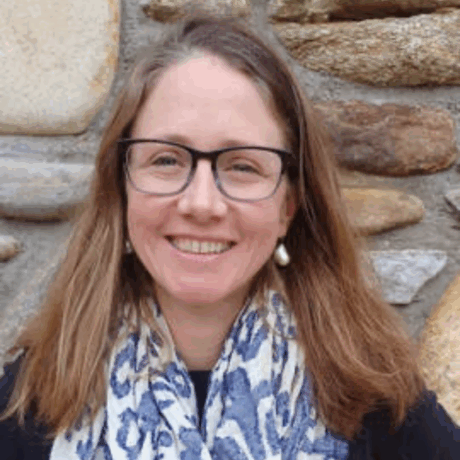
Two days after Hurricane Helene ravaged Western North Carolina, the roads in our Asheville neighborhood were clear enough for us to pick our way out. My oldest son and I set off to see if we could get to our church, which is situated about thirty minutes outside of town in the Reems Creek Valley.
Making our way around fallen power lines, chunks of missing pavement, tree trunks, and small landslides, we arrived about a mile from church. At this point, uncertain about how our little sedan might manage the rocky, uneven terrain, we parked on the roadside and walked.
The single road out of this small community, which is ringed by mountains on three sides, had been completely washed out where it crossed the creek. The first person we met as we walked was a church member carrying a load of gravel in his tractor bucket. For the previous two days, church members had carefully scraped the gravel from the church lot and used it to rebuild the road. When we arrived, the swollen creek was still flowing through people’s yards. Mailboxes, fenceposts, trash, even trout, were scattered all over the valley, but the road was repaired. People could get out and supplies could come in.
That image, a Kubota and a couple of John Deeres moving back and forth to repair the destroyed road, remains rooted in my imagination. It’s a working picture of what it means to be the church. These commitments were set into sharp relief in a crisis, when putting the resources of the church at the service of the community was truly a matter of life or death. But this church and its people had cultivated these habits long before the storm. The church was already working to reimagine how its building might be used. It had created a space for law enforcement officers and first responders to find respite during their shifts—a place to do paperwork, eat a meal, or use the bathroom. After the hurricane, that space was occupied non-stop by first responders and officers from all over the southeast. The church had envisioned its grounds as a public space, working with the county to make a picnic area by the creek, putting up a basketball court and hoop, and unlocking the parking lot so anyone had access. So, it was natural that the grounds became a staging area for road crews and the teams working to restore power to the region. It made sense to offer an empty room in the education hall to a local artist whose studio had been destroyed in the storm. I’m grateful to be a part of a church community that is eager to be flexible and generous.
This work of giving is never easy. Our instincts often prompt us to look after ourselves and our institutions first and foremost. There is some wisdom in those desires—a healthy, thriving church can serve its community well. But over time we can grow so intent on self-preservation that it becomes our chief, and only, concern. We do whatever is necessary to keep things running just as they’ve always been. Our gaze shifts inward, and the church becomes an end, not a means. We look to ourselves, not God, for sustenance and forget that our call involves a larger vision, loving God and loving our neighbor. Our Presbyterian Book of Order exhorts us: the church is to be a community of faith, entrusting itself to God alone, even at the risk of losing its life. That’s at the heart of generosity, a deep trust that it is God who sustains, upholds, and provides, and that our work is simply to follow Jesus, whatever the cost.
The same parking lot, which provided much needed gravel, served another purpose that weekend after the storm. It was the location for Sunday morning worship. There was no electricity, no water, plenty of chaos and uncertainty, but word spread, and the people who could get there on foot gathered to sing hymns and read the Psalms on the ground where we have worshipped for over a century. They started with Psalm 46, God is our refuge and strength, an ever-present help in trouble. They could not explain the storm or why it happened, but they could come before God in their confusion, grief, gratitude, and anxiety. Worship was an anchor to something that no storm could take away. And worship restores our focus: when we see Jesus marked by the wounds of love, crucified and raised to new life, we’re invited into a world that is bigger than our own fears and uncertainties.
I doubt our church members were ruminating on some concept of generosity or love as they removed our gravel. They certainly didn’t consult the church board. They just took what we had and put it where it was most needed. But their work reflects a habit, one that patterns itself after the God we gather before each week. It’s a practice of seeing every resource we have as something that’s been given to us. From that vantage point, everything we have is available to be moved, re-purposed, or given away again, as needed. It’s loving because you know yourself to be loved, because you know that the gravel you stand on as you worship doesn’t belong to you anyway, but to the one who made all gravel, and who would have all things, every last pebble and rock, in the service of his redemptive, restorative work.
Rebecca Gurney is an ordained minister in the Presbyterian Church USA. She has served as the pastor of Reems Creek-Beech Presbyterian church since 2020. She lives with her family in Asheville, NC.
Share Your Voice in the 2025 Giving in Faith Survey
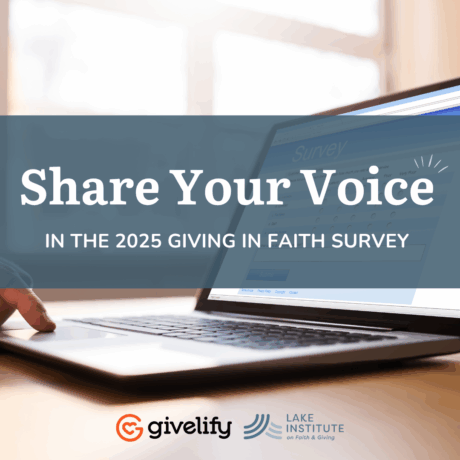
Faith communities gave $146.5 billion in 2024, transforming lives and communities—yet their impact is often missing from the national conversation.
As a faith leader, you can change that. The Giving in Faith survey, developed by Givelify in partnership with Indiana University’s Lake Institute on Faith & Giving, amplifies voices like yours to highlight faith’s vital role and impact in today’s world.
It takes just 10 minutes, and you’ll receive a $20 thank-you. Take the survey to help shape how the world sees faith and giving.
From the Story Shelf: Flood Becomes Turning Point for AME Church
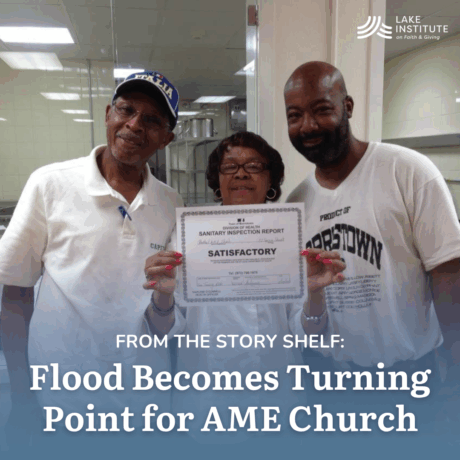
This previously published article from Lake Institute’s Faithful Generosity Story Shelf explores how faith communities respond to disaster through generosity, presence, and long-term commitment. It highlights the unique role that congregations and religious organizations play in offering both immediate relief and sustained care long after headlines fade.
We invite you to revisit this powerful story that reflects on how faith continues to inspire resilience and hope in times of crisis.
Subscribe
Insights is a bi-weekly e-newsletter for the religious community and fundraisers of faith-based organizations that provides:
- Reflections on important developments in the field of faith and giving
- Recommended books, studies and articles
- Upcoming Lake Institute events

